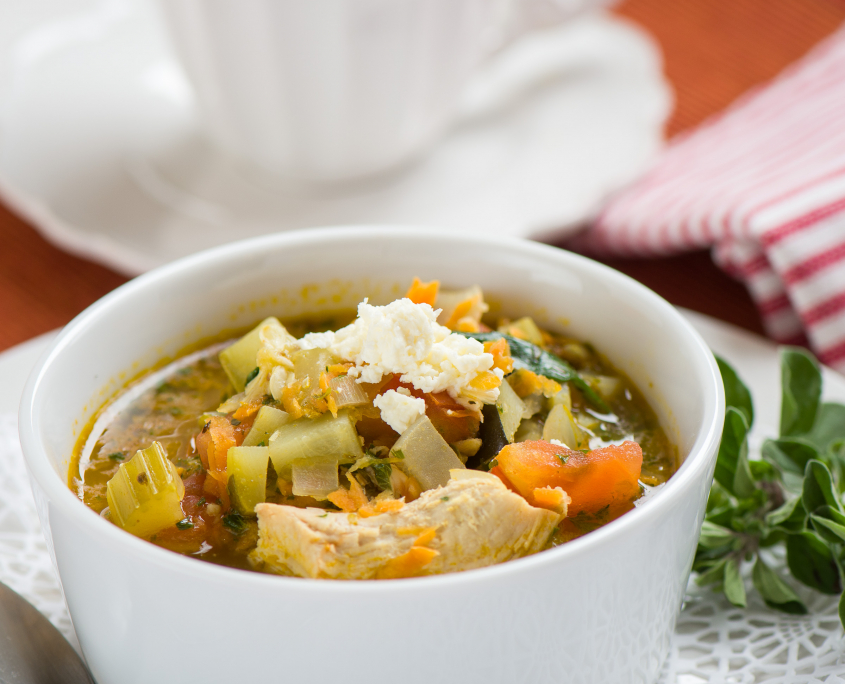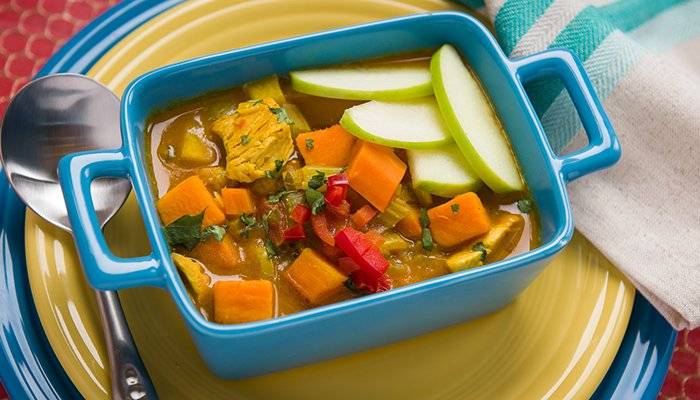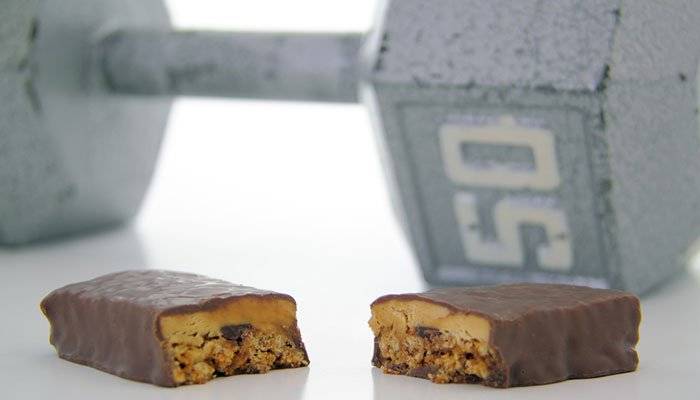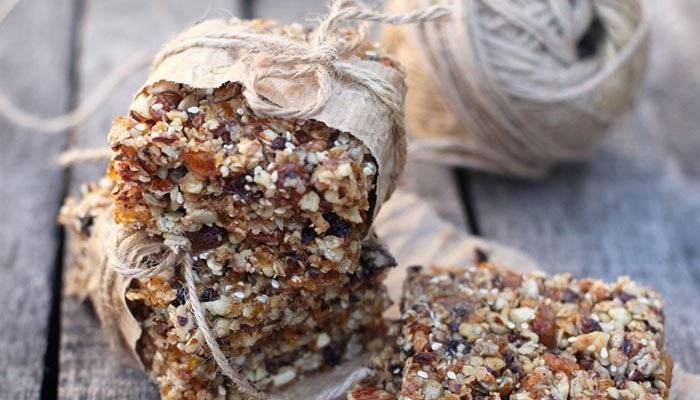Manna Bread Sandwich
Enjoy our Manna Bread Sandwich recipe with the ingredients you love. This gluten free lunch is a great way to enjoy a guilt-free lunch.
We all need food to survive but to live well and free of disease eating the right type of food is necessary.
Enjoy our Manna Bread Sandwich recipe with the ingredients you love. This gluten free lunch is a great way to enjoy a guilt-free lunch.
This powerful green smoothie, fortified with kale is perfect for breakfast, post morning workout snack or workout recovery drink.
During the holiday season, eating healthy can be hard when you are surrounded by temptation. The holidays can also be stressful and trigger psychological reasons to munch, even though we’re not hungry. Whether it’s due to loneliness, or to distract from an issue brewing in our life, it’s tempting to snack or over-eat to fill a void that isn’t in our stomach.
We equate a lot of emotion and nostalgia with food, from associations formed in childhood and clever advertising that equates eating with happiness. But we’re certainly not happy when we gain weight and become burdened by extra pounds, elevated cholesterol, heart disease, and Type 2 Diabetes.
Recognizing the triggers that compel you to snack is an empowering eye-opener. Observe yourself to become aware of your eating habits, and with each mouthful, understand exactly why you are eating, and if you’re really hungry or not.
Eating in response to emotions or certain situations can be a habit well ingrained since childhood.
Enjoy the holiday season, knowing your waistline doesn’t have to expand!
Mountain Trek is the health reset you’ve been looking for. Our award-winning health retreat, immersed in the lush nature of British Columbia, will help you detox, unplug, recharge, and roll back years of stress and unhealthy habits. To learn more about the retreat, and how we can help you reset your health, please email us at info@mountaintrek.com or reach out below:

Our Greek Feta & Turkey Stew is the perfect fall lunch recipe. Packed full of protein, fiber, and vitamins, this soup is a great recipe for Thanksgiving leftovers. Use fresh feta atop your stew to add a layer of depth to the flavor profile.
Mountain Trek is the health reset you’ve been looking for. Our award-winning health retreat, immersed in the lush nature of British Columbia, will help you detox, unplug, recharge, and roll back years of stress and unhealthy habits. To learn more about the retreat, and how we can help you reset your health, please email us at info@mountaintrek.com or reach out below:

This healthy Mulligatawny Curried Coconut Chicken soup is a lunch favorite at Mountain Trek for its rich and delicious flavors and beautiful color. It includes a good variety of vegetables and other ingredients, offering you a wide range of nutrients. The coconut milk adds thickness and healthy fat, while the spicy of the jalapeno and sweet of the apple dance in harmony on your tongue.
Vegetarian Option: Omit the chicken and add chickpeas for protein and texture.
Serves 4.
Mountain Trek is the health reset you’ve been looking for. Our award-winning health retreat, immersed in the lush nature of British Columbia, will help you eat healthfuly, unplug, recharge, and roll back years of stress and unhealthy habits. To learn more about the retreat, and how we can help you reset your health, please email us at info@mountaintrek.com or reach out below:

By Jennifer Keirstead, Holistic Nutritionist
It seems that in today’s fast-paced world, we’ve developed the need for quick snacks and meal replacements. Protein bars saturated the market in the 80’s and have since been widely accepted as a healthy snack, or a quick meal on-the-go. While these bars are indeed a quick and easy source of, “fast food”, they certainly aren’t a replacement for a healthful meal; nor do most of them substitute as a whole foods snack. Finding a protein bar that can actually stand up to a good quality meal; loaded with vitamins, minerals and fibre, is pretty much impossible. This is because most protein bars are made from processed ingredients, preservatives and flavour enhancers. In fact, most protein bars aren’t much better for you than that Hersey’s chocolate bar, and some brands actually contain more sugar than a candy bar! This is certainly a red flag, as after some label reading, I found some protein bars to contain upwards of 300 calories per serving. Most health bars and even protein bars also contain trans fats, simple carbs and processed sugars. Here are some common ingredients found in so called, “healthy” protein bars:
As an alternative, I suggest making protein bars at home. When you make things yourself, you have control over the ingredients going into your body. Here’s one of my favorite recipes.

Ingredients
Method
Enjoy! These make an excellent snack to enjoy through-out the week. Just remember to try and stay away from not-so-healthy protein bars, thinking they all make healthful snacks, or even worse, meal replacements. After all, one of my favorite Food Rules by Michael Pollan is: “Don’t eat anything your great grandmother wouldn’t recognize as food.”
To find more great recipes and to connect with Jennifer and ask questions about nutrition, download Mountain Trek’s Guide in your Pocket App for iPhone.
[fbcomments]
By Jennifer Keirstead, Holistic Nutritionist
Given that we rarely chew our food properly these days, you might say that chewing is somewhat of a lost art. In this fast-paced world of rushing here and there, we are literally shoving food down our throats, and inhaling our meals as if we’re not even conscious of what we’re doing. We eat in our cars, on the subway, and while walking down the busy sidewalk. I’ve even caught myself eating over the kitchen sink.
We’re hearing more about the “slow food movement”, but still too often, we’re finding ourselves with no time to even slow down to eat, and here’s the problem: with this “speed-eating”, comes a lost opportunity for optimal health and well-being. This is why . . .
Many of us are quite familiar with eating our foods so fast, that we’re left burping, bloated and with what I often refer to as a “food hangover”. Digestion is directly linked to the health of our cells; therefore chewing is a very basic way to improve our overall health.
Digestion begins in the mouth. This is because our saliva produces the enzyme amylase, which begins the digestion of carbohydrates. Food must be mixed and chewed very well in order to release its full potential of nutritional value. As a bonus, you may also notice that the more you chew your food, the better it tastes, as more nutrients are released this way. You’re always hearing, “you are what you eat” but looking a little closer we see that, “you are what you absorb.” You can be eating the most nutritious foods in the world but if you’re not absorbing the nutrients, they’re of very little value.
Here’s the thing; the art of chewing doesn’t allow for modern-day habits such as eating on the run or grabbing a quick bite. To chew properly, one must sit, relax and enjoy their food. However, this doesn’t mean that sitting in front of the TV is the best option either. We want to engage in what I like to call “conscience eating”; almost like in our yoga practice. We want to be focused on the food on our plate, what it tastes like, thoroughly chewing and even putting our fork down in between each bite. Dining in the company of family and friends is encouraged because eating with others often encourages conversation, which slows down our eating; allowing us to chew.
Chewing helps prevent the heavy feeling that sometimes follows a meal. It also helps in the management of a healthy weight by slowing down the eating process, allowing the body to signal the brain when it’s full. So even though it might take you a little longer to eat, understand that many of us eat much too fast and might pay the price with our health down the road.
Give it a try and chew your food! After all, “your stomach doesn’t have teeth.”
Mountain Trek is the health reset you’ve been looking for. Our award-winning health retreat, immersed in the lush nature of British Columbia, will help you detox, unplug, recharge, and roll back years of stress and unhealthy habits. To learn more about the retreat, and how we can help you reset your health, please email us at info@mountaintrek.com or reach out below:
You’ve probably heard of “free-range” before. According to Wikipedia, “free-range is a method of farming where animals are permitted to freely roam about. This principle allows the animals as much freedom as possible to live in a reasonably natural way.”
PETA claims that
“Many animal products labeled free range do allow their livestock access to outdoor areas, but here’s the catch; there’s no provision for how long they spend or how much room they must have outside.”
Often times criteria such as environmental quality, size of the area, number of animals, or space per animal, are not exactly accounted for. It has also been revealed that outdoor conditions can be extremely unsuitable for the animals due to the lack of trees and shade, grass, and other vegetation.
Here’s the thing; chickens, like most other birds, are omnivores who love to graze in grasses, forage for worms, grubs, and insects and dig for microflora found in soil. These nutrients are more bio-available than those found in corn and most supplements that commercially-raised chickens are being fed. The exposure to natural light, as well as the opportunity to stretch their legs and gain predatory stimulation, can’t be underestimated for their mental and physical health and well-being.
Their living situation has a direct effect on the eggs they produce. Without a doubt, a low-stress lifestyle and natural diet contribute to eggs with higher nutrient value. Many notice that some yolks are brightly colored yellow (almost orange), indicating an egg that is loaded with fat-soluble, antioxidant nutrients. Expect to find the more vivid colored yolks in the spring when the grass and bugs are plentiful. Also, bear in mind, variations will be seen due to differences in breed and age of chickens, their exact diet, and the season.
Sally Fallon, author of Nourishing Traditions, explains
“Eggs provide all eight essential protein building amino acids. A large whole, fresh egg offers about six to seven grams of protein and five grams of (healthy) fat. One egg serves up the valuable vitamins A, K, E, D, B-complex and minerals iron, phosphorus, potassium and calcium; as well as choline, a fatty substance found in every living cell and is a major component of our brain.”
Fallon expresses that by, “Subjecting chickens to a strictly vegetarian diet prevents them from achieving their ideal health by denying them the nutrients found through scavenging around the farm, barnyard and pasture. Compared to eggs from conventionally raised, caged hens; eggs produced by free-roaming, pasture-pecking hens, have far more omega-3 fatty acids and all other nutrients.”
In more and more communities, local farmers and even your friendly neighbors are raising free-to-range, happy, healthy chickens. This is good news for the egg-lover. This way, we get to see with our own eyes, hens roaming free in environments in which they favor.
If you’re unable to buy eggs from a local farm or neighbor, the S.P.C.A. has a certified and trusted label; meaning the food products bearing this stamp have been inspected and certified to Canadian S.P.C.A. developed farm animal welfare standards. Battery cages and gestation crates are not allowed under this certified program. The program runs on “5 Freedoms,” which includes, “Freedom from hunger and thirst, freedom from discomfort, freedom from pain, injury and disease, freedom from distress and freedom to express behaviors that promote well-being.”
It seems like a win-win to me. Free-to-range chickens are happily left to frolic and forage and therefore, we get nutrient-dense eggs full of the nutritional components Mother Nature intended.
Jennifer Keirstead, RHN
Mountain Trek is the health reset you’ve been looking for. Our award-winning health retreat, immersed in the lush nature of British Columbia, will help you detox, unplug, recharge, and roll back years of stress and unhealthy habits. To learn more about the retreat, and how we can help you reset your health, please email us at info@mountaintrek.com or reach out below: